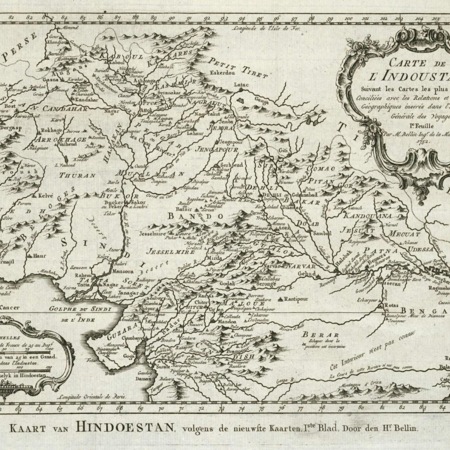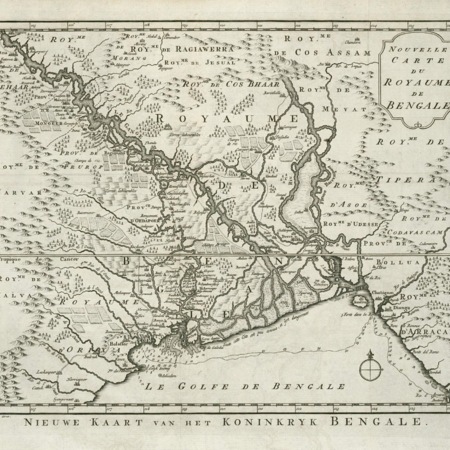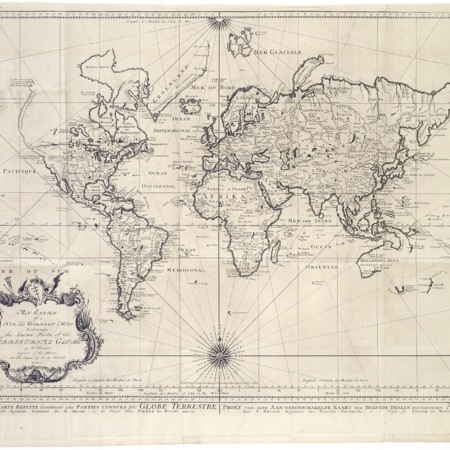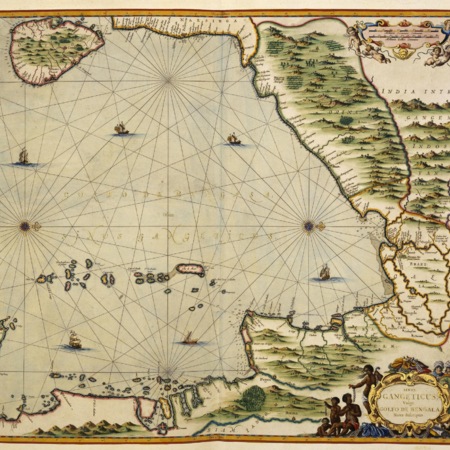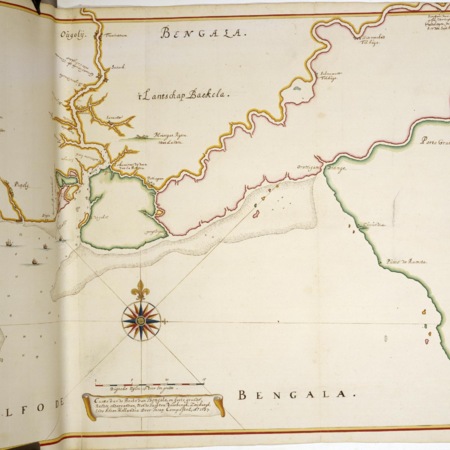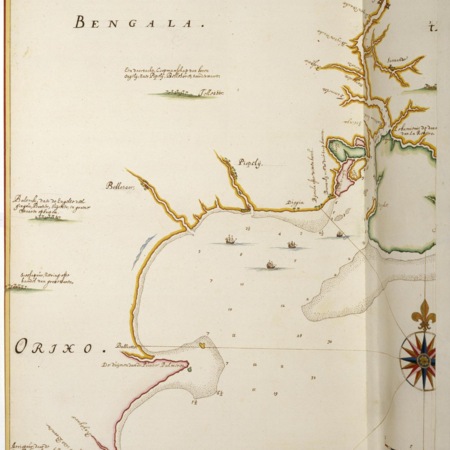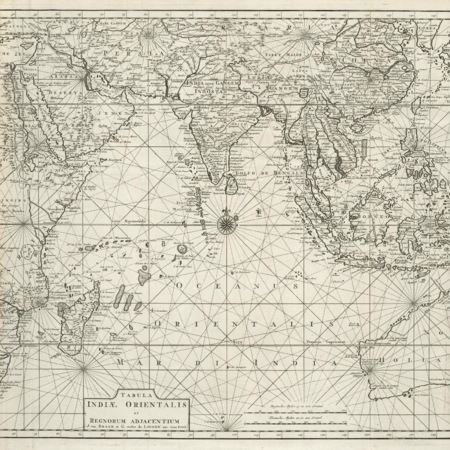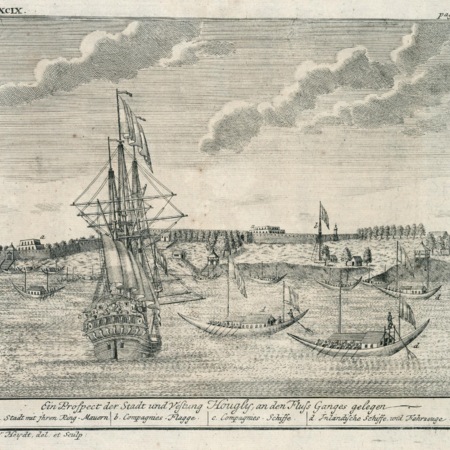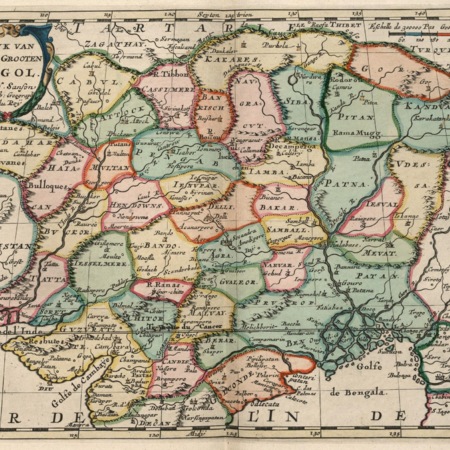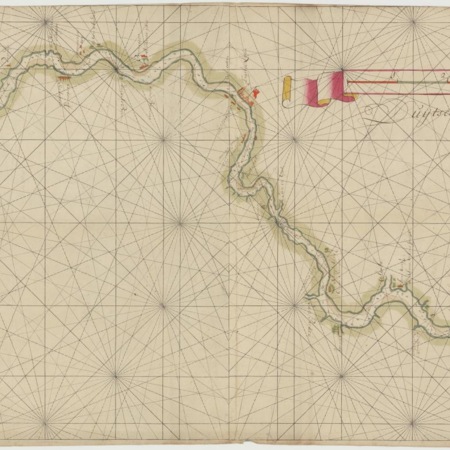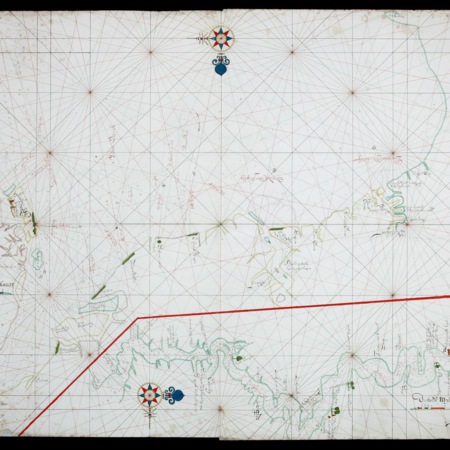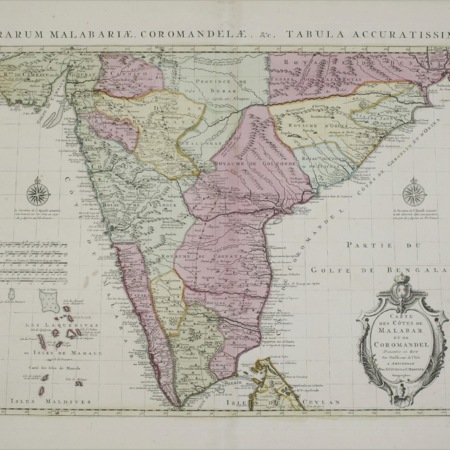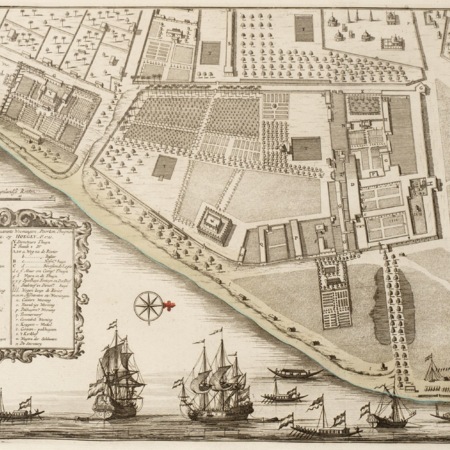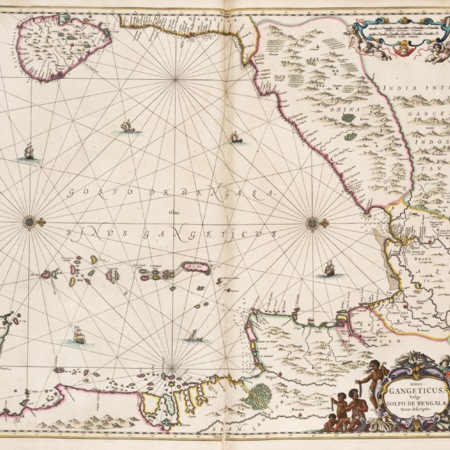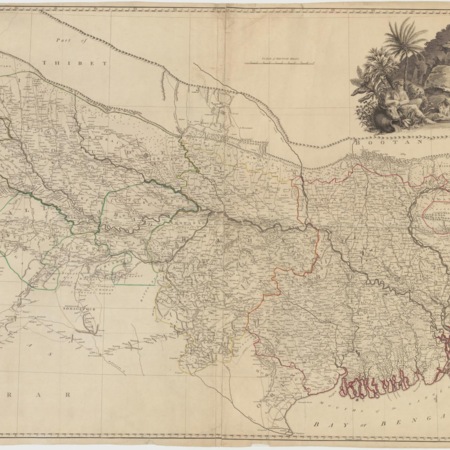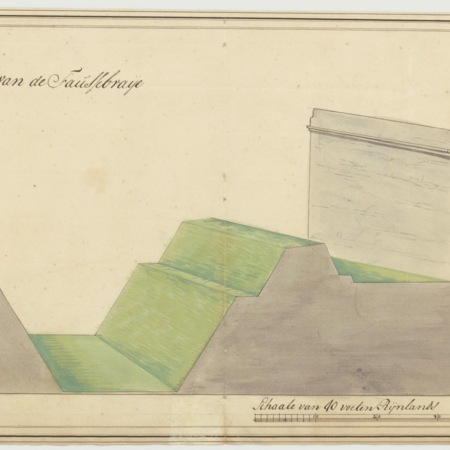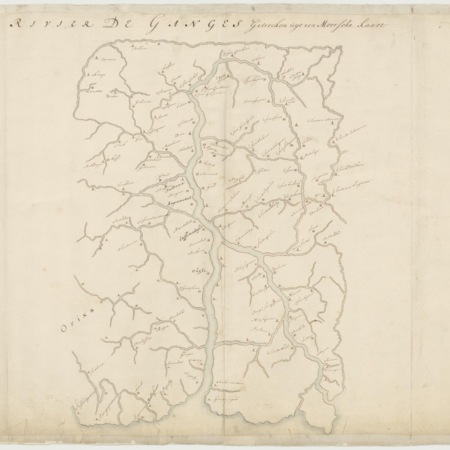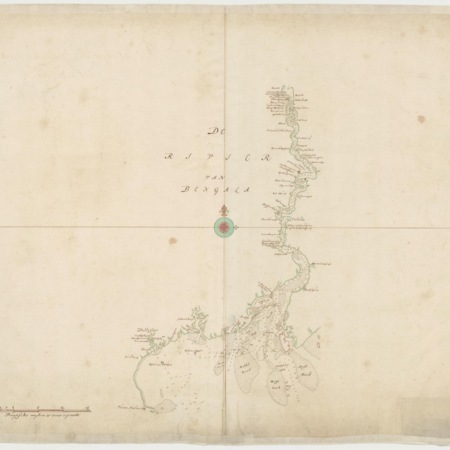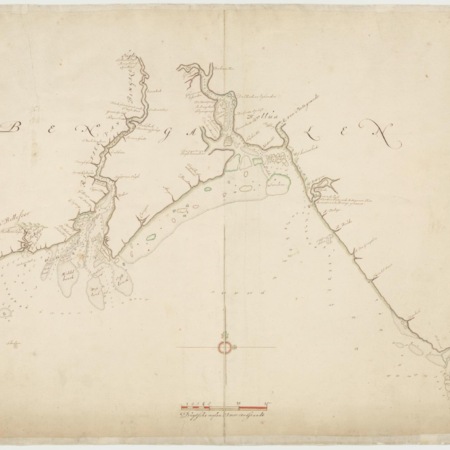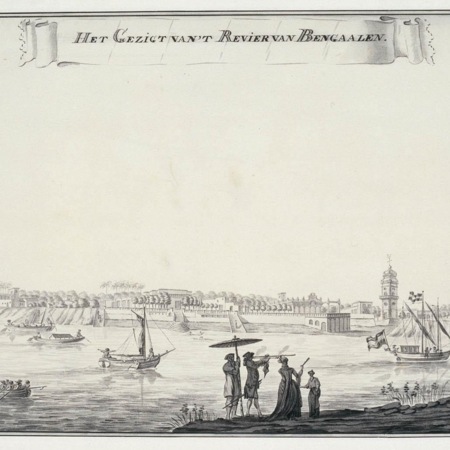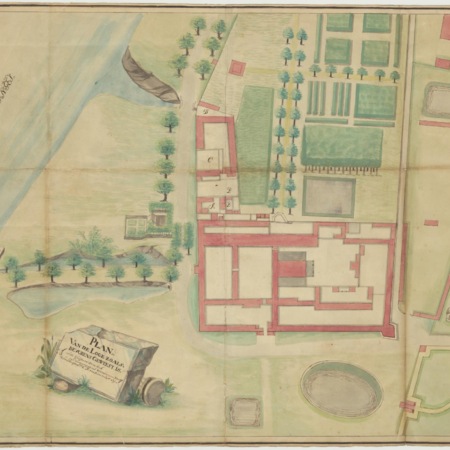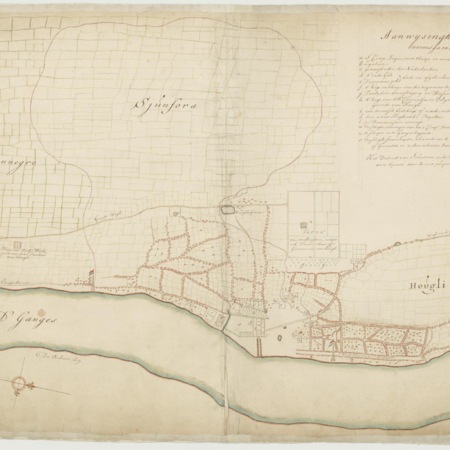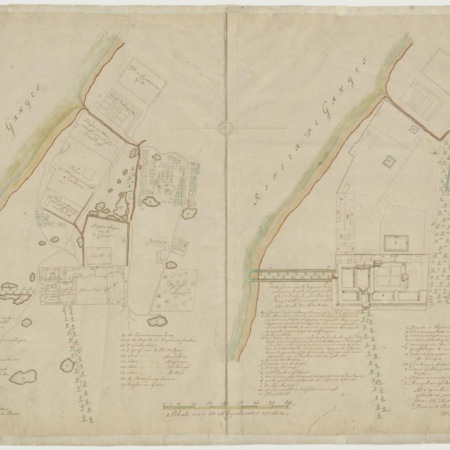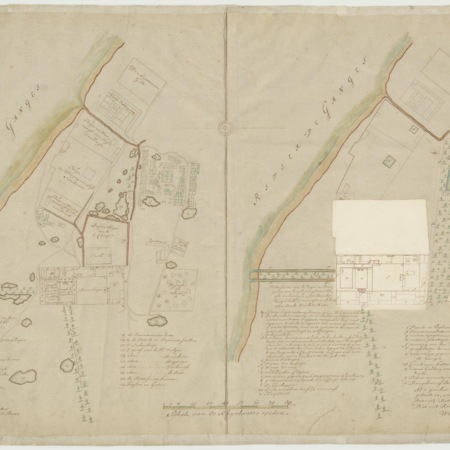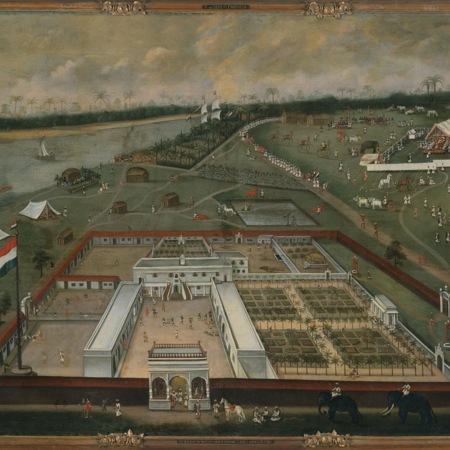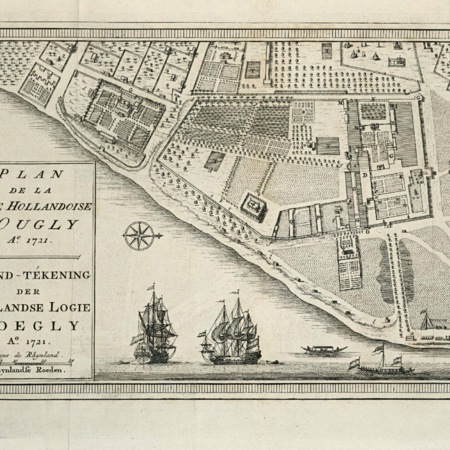Tjutjura, now known as Chunchura functioned as the headquarters of the VOC in Bengal. Originally situated in the neighbouring town of Houghly, the base was relocated in 1656. The two names were subsequently used indiscriminately. This base was said to be the most beautiful in Asia. The town was notorious for its corrupt VOC officials whose only aim was to get rich as quickly as possible by trading for their own account
much to the displeasure of the VOC's central administration in Batavia. The fort was known for its size and strength. It bore the name of 'Gustavus' after Gustaaf Willem van Imhoff, who held the post of governor-general from 1743 to 1750. Situated close to the fort was a shipyard and a burial ground. In the 18th century the director ordered a church and a school to be built for the local population. This meant that many of the Company's employees were more involved with their own private trade
to the concern of the VOC's central administration at Batavia. The VOC complex at Houghly and Chinsura expanded rapidly in the late 17th century. There were warehouses for cotton, opium, ginger and hemp. The popular Bengal silk was also stored in Chinsura from where it was shipped to Batavia and Japan. Another Bengali product was sugar, which was sold in Persia at a great profit. In Chinsura the Company operated an unusual agreement with the nawab, the local representative of the Mogul emperor. In effect, the Company rented the city. The local administration was not in the hands of the governor, but of the fiscal, who functioned as a kind of mayor. His task was to protect the Company's property and to administer justice over the local population. The VOC's Bengali bases fell under the jurisdiction of the Coromandel governor until 1655, after which Bengal became an independent directorate with its headquarters in Chinsura.
